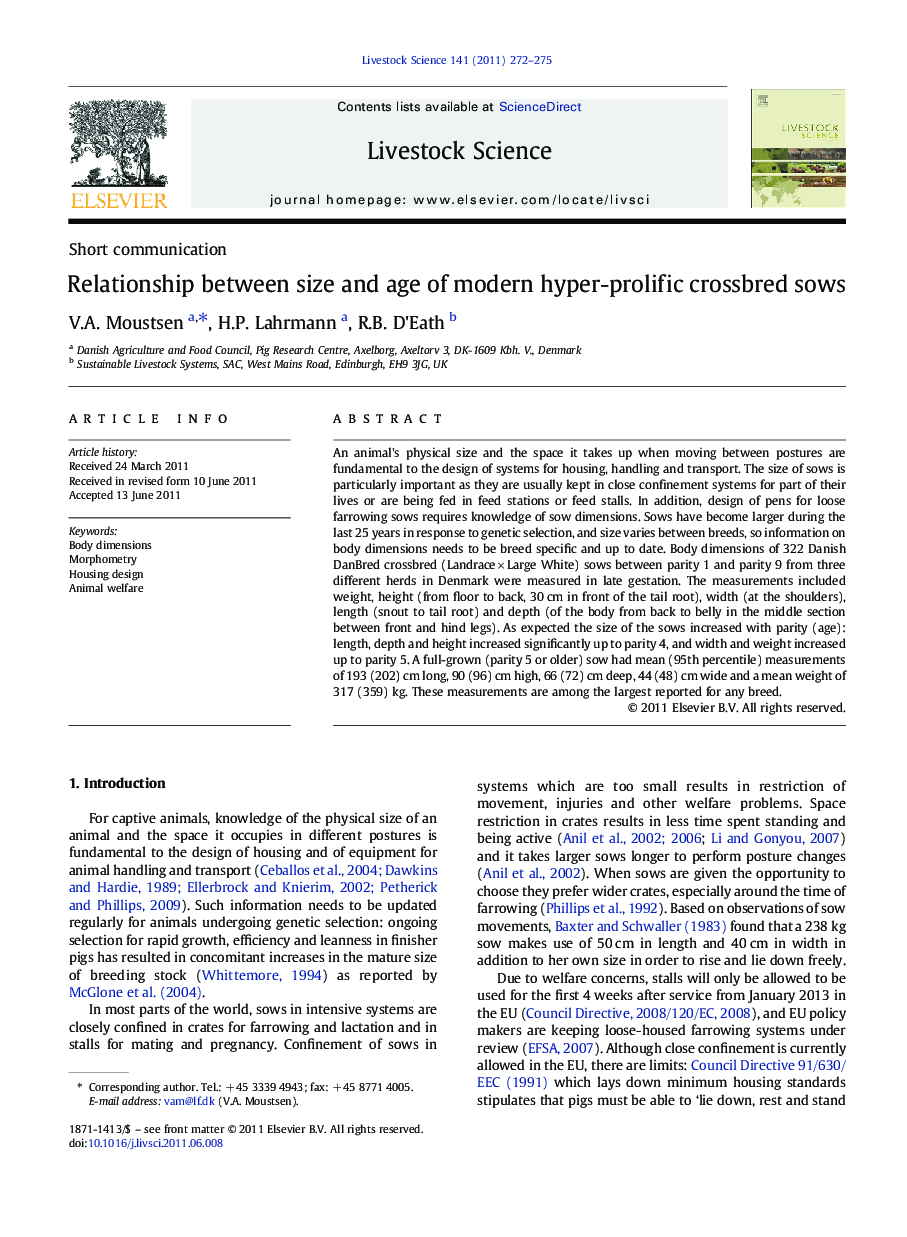| Article ID | Journal | Published Year | Pages | File Type |
|---|---|---|---|---|
| 5790652 | Livestock Science | 2011 | 4 Pages |
An animal's physical size and the space it takes up when moving between postures are fundamental to the design of systems for housing, handling and transport. The size of sows is particularly important as they are usually kept in close confinement systems for part of their lives or are being fed in feed stations or feed stalls. In addition, design of pens for loose farrowing sows requires knowledge of sow dimensions. Sows have become larger during the last 25 years in response to genetic selection, and size varies between breeds, so information on body dimensions needs to be breed specific and up to date. Body dimensions of 322 Danish DanBred crossbred (Landrace Ã Large White) sows between parity 1 and parity 9 from three different herds in Denmark were measured in late gestation. The measurements included weight, height (from floor to back, 30 cm in front of the tail root), width (at the shoulders), length (snout to tail root) and depth (of the body from back to belly in the middle section between front and hind legs). As expected the size of the sows increased with parity (age): length, depth and height increased significantly up to parity 4, and width and weight increased up to parity 5. A full-grown (parity 5 or older) sow had mean (95th percentile) measurements of 193 (202) cm long, 90 (96) cm high, 66 (72) cm deep, 44 (48) cm wide and a mean weight of 317 (359) kg. These measurements are among the largest reported for any breed.
